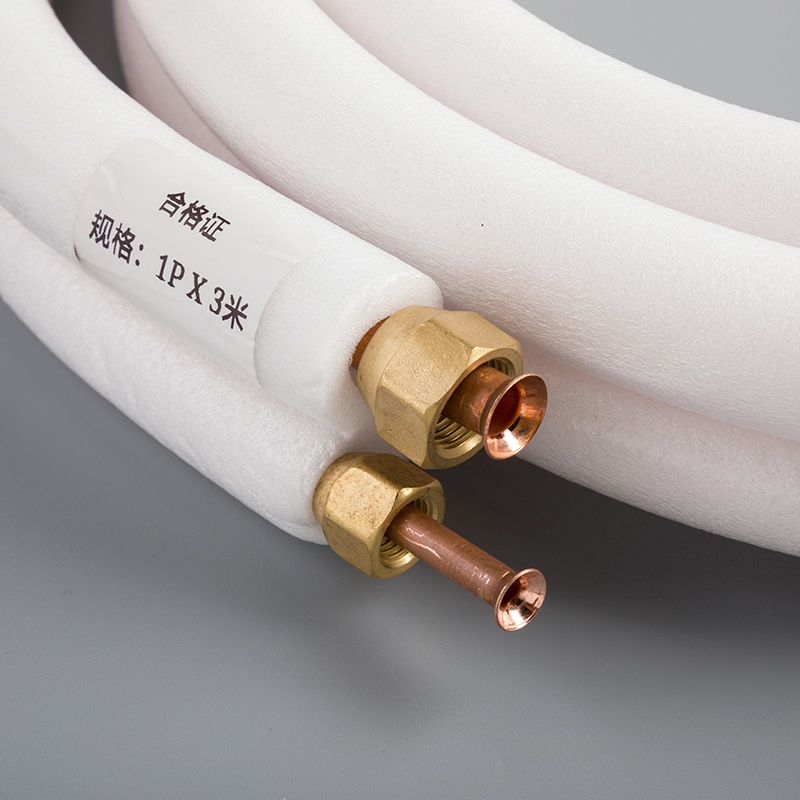Comparing Different Types of Copper Pipes for Air Conditioning

When writing a Comparison blog post on Different Air Conditioning Copper Pipes, it's crucial to understand the significance of choosing the right type of copper pipe for air conditioning systems. Copper pipes offer high thermal conductivity, ensuring efficient heat transfer, which leads to better performance and energy savings. Additionally, copper's resistance to corrosion enhances the lifespan of air conditioners. Various types of copper pipes are available for different applications, including Type K, Type L, and Type M, each with unique characteristics suited for specific needs. Understanding these differences helps in making informed decisions for optimal air conditioning performance.
Advantages of Copper Pipes Over Other Materials

Heat Transfer Rate
Copper pipes excel in Comparison to other materials due to their superior heat transfer rate. High thermal conductivity ensures efficient cooling and heating. This efficiency leads to better performance in air conditioning systems. Copper's ability to transfer heat quickly makes air conditioners more effective.
Resistance to Oxidation and Corrosion
Copper pipes offer excellent resistance to oxidation and corrosion. This property enhances the longevity and durability of air conditioning systems. Comparison with other materials shows that copper maintains its integrity over time. The resistance to environmental factors ensures a longer lifespan for air conditioners.
Ease of Installation
Copper pipes provide ease of installation due to their flexibility and workability. Installers can bend and braze copper pipes easily. This flexibility simplifies the installation process. Comparison with other materials reveals that copper is more adaptable. The workability of copper reduces installation time and effort.
Types of Copper Pipes

Type K Copper Pipes
Pressure ratings
Type K copper pipes offer the highest pressure ratings among the available types. These pipes can handle higher pressures due to their thick walls. This feature makes them suitable for demanding applications.
Wall thickness
The wall thickness of Type K copper pipes is the greatest compared to other types. This thickness enhances durability and longevity. The robust construction ensures reliability in various conditions.
Specific applications
Type K copper pipes find use in underground installations. These pipes are ideal for water distribution and fire protection systems. The high durability makes them a preferred choice for critical applications.
Type L Copper Pipes
Pressure ratings
Type L copper pipes provide moderate pressure ratings. These pipes balance strength and flexibility. The pressure ratings make them versatile for different uses.
Wall thickness
The wall thickness of Type L copper pipes is thinner than Type K but thicker than Type M. This intermediate thickness offers a good balance between durability and ease of installation. The construction supports a wide range of applications.
Specific applications
Type L copper pipes are common in interior plumbing. These pipes are also used in fire protection systems. The versatility makes them suitable for both residential and commercial settings.
Type M Copper Pipes
Pressure ratings
Type M copper pipes have the lowest pressure ratings among the three types. These pipes are suitable for low-pressure applications. The lower ratings make them less ideal for high-stress environments.
Wall thickness
The wall thickness of Type M copper pipes is the thinnest. This characteristic makes them lighter and easier to handle. The thinner walls reduce material costs, making them more affordable.
Specific applications
Type M copper pipes are favored for residential work. These pipes are often used in domestic water service. The affordability and ease of installation make them popular for home projects.
Industry Standards and Utility-Focused Designs
Overview of Industry Standards
Industry standards play a crucial role in ensuring the quality and reliability of copper pipes used in air conditioning systems. The Standard Specification for Seamless Copper Tube for Air Conditioning and Refrigeration Field Service sets the benchmark for these products. Compliance with these standards guarantees that copper tubes meet specific requirements for durability, pressure resistance, and thermal conductivity.
Relevant codes and regulations
Relevant codes and regulations ensure that copper pipes adhere to safety and performance criteria. The Standard Specifications for Seamless Copper Tube Used in Air Conditioning and Refrigeration Field Services provide detailed guidelines. These specifications cover aspects such as material composition, manufacturing processes, and testing methods. Adherence to these standards ensures that copper pipes perform optimally in various applications.
Specific Products
Several brands offer copper pipes that meet industry standards and cater to specific needs in air conditioning systems. These products are designed to provide utility-focused solutions for both residential and commercial installations.
Mexflow Copper Pipes
Mexflow Copper Pipes by Mehta Tubes Limited stand out in the HVACR industry. These pipes are available in various lengths and diameters, making them suitable for diverse applications. Mexflow Copper Pipes comply with industry standards, ensuring high performance and reliability. The robust construction and superior thermal conductivity make these pipes an excellent choice for air conditioning systems.
Other notable brands
Other notable brands also offer high-quality copper pipes for air conditioning systems. These brands include Mueller Industries, Wieland, and Cerro Flow Products. Each brand provides products that meet industry standards and offer unique features. A Comparison of these brands reveals differences in product offerings, pricing, and availability. Choosing the right brand depends on specific requirements and preferences.
Copper pipes offer significant advantages for air conditioning systems. Comparison with other materials highlights copper's superior heat transfer rate, corrosion resistance, and ease of installation. Each type of copper pipe—Type K, Type L, and Type M—serves specific applications based on pressure ratings and wall thickness.
See Also
Benefits of Opting for Copper Tubing in Aircon Systems
The Impact of Copper Piping on Air Conditioning Innovation
The Essential Role of Copper Tubes in Aircon Efficiency
Exploring Performance: Copper vs. Aluminum Piping in Air Conditioning
Key Advantages of Copper Tubing for Air Conditioning Systems


